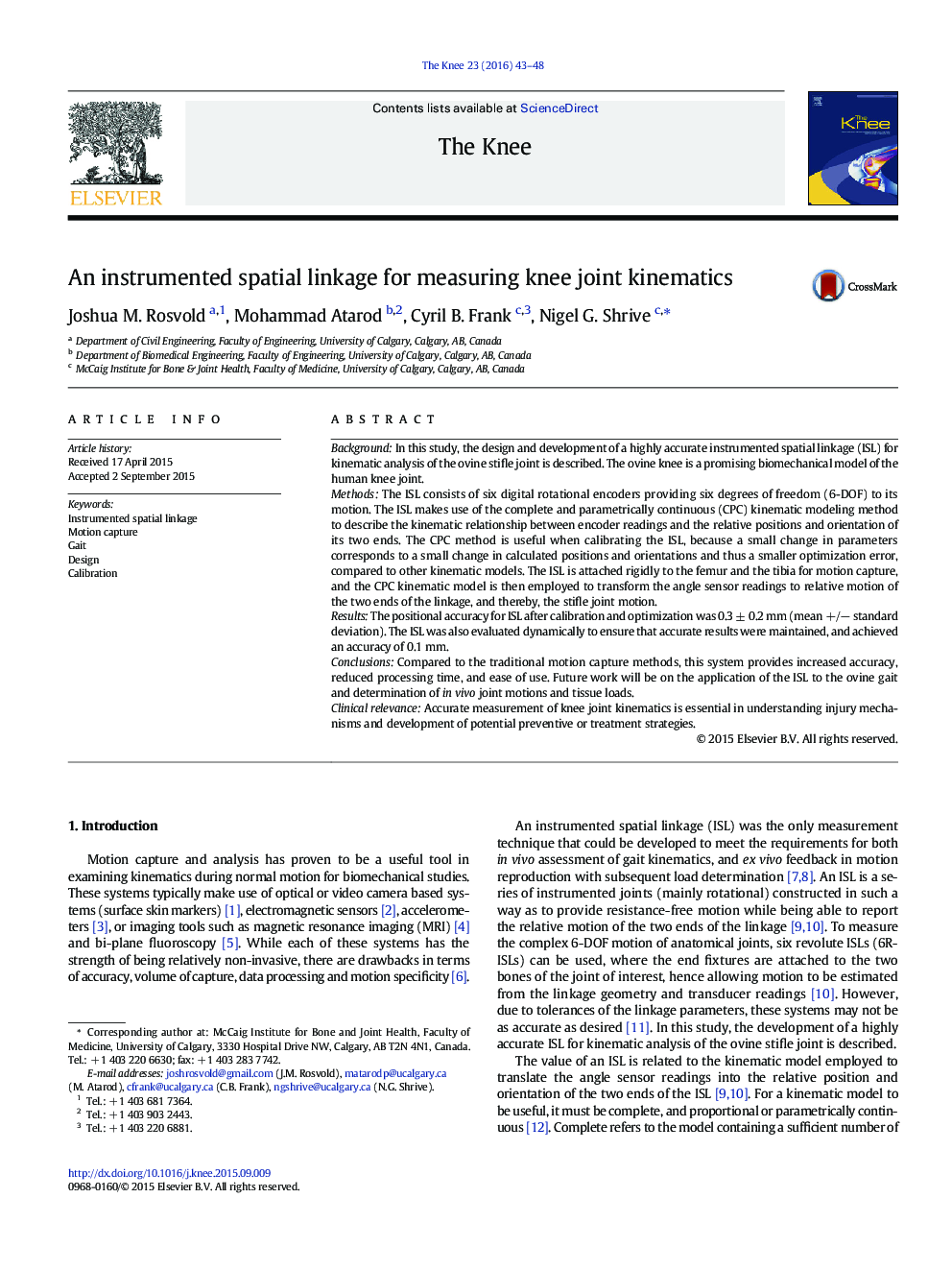| Article ID | Journal | Published Year | Pages | File Type |
|---|---|---|---|---|
| 4077189 | The Knee | 2016 | 6 Pages |
•A highly accurate instrumented spatial linkage for measuring in vivo knee motions•A novel application of the CPC model to describe ISL kinematics•Calibration of ISL parameters using a unique optimization procedure•Dynamic evaluation of the ISL and its high accuracy (0.1 mm)
BackgroundIn this study, the design and development of a highly accurate instrumented spatial linkage (ISL) for kinematic analysis of the ovine stifle joint is described. The ovine knee is a promising biomechanical model of the human knee joint.MethodsThe ISL consists of six digital rotational encoders providing six degrees of freedom (6-DOF) to its motion. The ISL makes use of the complete and parametrically continuous (CPC) kinematic modeling method to describe the kinematic relationship between encoder readings and the relative positions and orientation of its two ends. The CPC method is useful when calibrating the ISL, because a small change in parameters corresponds to a small change in calculated positions and orientations and thus a smaller optimization error, compared to other kinematic models. The ISL is attached rigidly to the femur and the tibia for motion capture, and the CPC kinematic model is then employed to transform the angle sensor readings to relative motion of the two ends of the linkage, and thereby, the stifle joint motion.ResultsThe positional accuracy for ISL after calibration and optimization was 0.3 ± 0.2 mm (mean +/− standard deviation). The ISL was also evaluated dynamically to ensure that accurate results were maintained, and achieved an accuracy of 0.1 mm.ConclusionsCompared to the traditional motion capture methods, this system provides increased accuracy, reduced processing time, and ease of use. Future work will be on the application of the ISL to the ovine gait and determination of in vivo joint motions and tissue loads.Clinical relevanceAccurate measurement of knee joint kinematics is essential in understanding injury mechanisms and development of potential preventive or treatment strategies.
